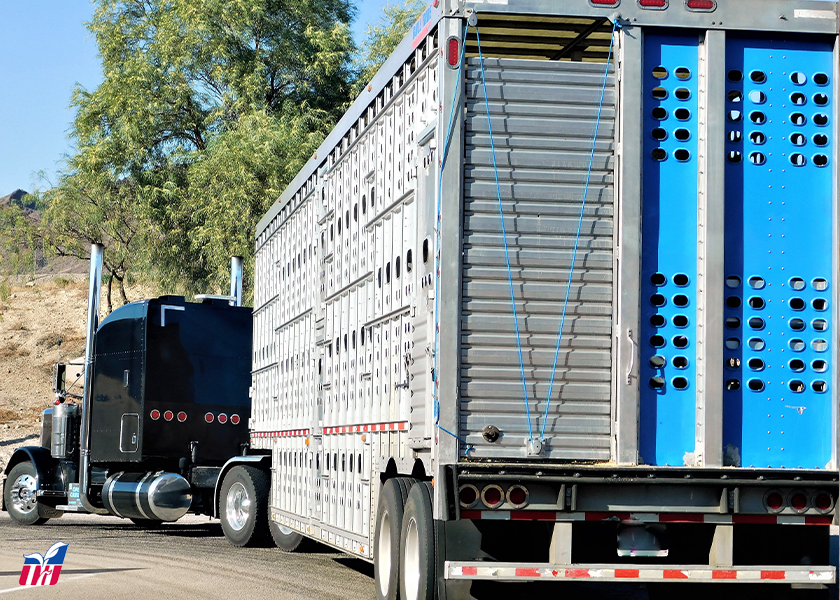Livestock Analysis | February 9, 2024

Price action: Hog futures rebounded from recent losses, although the closes came in well below the intraday highs. Expiring February futures rose 37.5 cents on the day, settling at $73.675. Most-active April advanced 80 cents to $81.15. That represented a weekly decline of $2.675.
5-day outlook: Traders apparently became less optimistic about the short-term hog outlook this week, with April futures falling substantially and the expiring February contract implying flat cash prices leading up to next Wednesday’s (2/14) expiration. The hog index for Wednesday was officially stated two cents lower than Tuesday at $74.00, with Thursday’s preliminary quote falling another 40 cents to $73.60. A portion of this week’s losses likely reflected persistently large weekly kills. That is, after essentially matching last year’s peak the two previous weeks, this week’s preliminary total reached 2.622 million head. That marked an approximate 2.6% weekly decline, but still topped the comparable year-ago figure by almost 7%.
Demand is holding up remarkably well, although export demand may be playing a large role in that buying at present. That’s best illustrated by Thursday’s monthly ag trade data, which stated December 2023 pork exports surging to 643.2 million pounds, the largest monthly total since May 2021. After dipping early in the week, pork cutout seemingly firmed into the weekend, with today’s midsession quote rising 12 cents to $86.48. We suspect demand strength will continue supporting the market in the face of large supplies in the short run.
30-day outlook: History suggests the seasonal cash rally will continue into mid-to-late February, although this week’s dip in the hog index suggests it may already have ended. One can argue that belated hog marketings are exaggerating the current supply of animals and meat, especially if one gives strong credence to December USDA data suggesting late winter and spring supplies will generally match year-ago levels. But an equally strong argument can be made for sustained annual increases of 2%-3%, since that’s been the industry pattern for the past fifteen months or so, despite USDA consistently indicating market hog numbers around unchanged levels. We tend to fall in the latter camp, but still tend to expect vigorous demand to continue supporting the hog and pork complex into March.
90-day outlook: We continue thinking grocers will feature hams aggressively as Easter dinner entrées this year after having maintained them at very high prices during the Easter 2023 season. That helped drag cash hog prices to an annual low last April. In contrast, active ham features this spring could power sustained price strength for the cash and wholesale markets. April futures trading about $8.00 over current cash values imply we have considerable company on that score. The early arrival of Easter on March 31, with the implied early start to the spring grilling season, will likely combine with the usual spring drop in hog supplies to power the market sharply higher by late spring and early summer.
What to do: Get current with feed advice. Carry all production risk in the cash market for now.
Hedgers: Carry all risk in the cash market for now.
Feed needs: You have all corn-for-feed and soybean meal needs covered in the cash market through February.
Price action: April live cattle futures rose 15 cents to $186.725, near mid-range and on the week gained $2.975. March feeder cattle futures prices closed up 30 cents at $247.15, near mid-range and for the week rose $2.35.
5-day outlook: Today’s technically bullish weekly high closes in April live cattle and March feeders set the table for some more technical/speculator buying interest in both markets early next week. Cash cattle market fundamentals are still sound. Cash cattle trade this week has been minimal thus far as feedlots and packers continue in a stand-off, though signs point to higher cash prices. There was very light cash trade through Thursday; a large proportion of steers traded were 644 head in Iowa at $179.00. Feedlots appear unwilling to move cattle at steady/weaker prices and packers may need supplies to fill out near-term slaughter runs. The noon report today showed Choice-grade boxed beef cutout value fell 87 cents to $294.14, while Select grade fell $1.34 to $282.78. Movement at midday was 76 loads. The Choice-Select spread is presently at $11.36.
30-day outlook: We suspect there will still be tight supplies of market-ready animals in the next few weeks. While packers have recovered from extended holiday- and weather-related cutbacks in January, steer dressed weights dropped from a record 942 pounds just before Christmas to 912 pounds in late January. Arctic weather in the Midwest in mid-January likely hurt cattle performance but warmer weather this month may boost weights only temporarily. Expect market-ready fed cattle supplies to remain very tight, especially with annual lows in weekly slaughter likely to arrive later this month or in March.
90-day outlook: The booming U.S. stock market that this week scored more record highs in the major indexes bodes well for consumer confidence heading into warmer weather and springtime grilling. That bodes well for consumer demand and the cattle markets in the coming months.
What to do: Get current with feed advice. All production risk in the cash market for now but be prepared for some hedge coverage as we have demand concerns.
Hedgers: Carry all risk in the cash market for now.
Feed needs: You have all corn-for-feed and soybean meal needs covered in the cash market through February.






